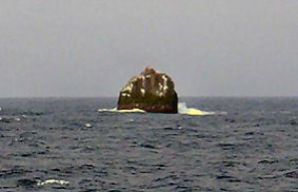They called in at Mobile, Alabama in blistering heat but a quick run ashore found the locals very friendly and Gordon was able to send a telegram to Frances saying, all was well.
They joined up with an east-going convoy but, very soon, ran into difficulties. An engine-room oil leak had the engineers struggling to fix when a fire started and caused intense heat and smoke. The engineers were fast becoming exhausted and it was only with the help of the 3rd mate and fellow gunner, Patrick Joyce, that matters were brought under control with foam. At that point a semaphore signal was received from the unsympathetic convoy leader, “Make less smoke!”
There they were with no engine power, drifting and, with the rest of the convoy now far ahead, they were sitting ducks for any hostile submarine.
For 10 days or so they continued to drift slowly eastwards, carried by the Gulf Stream when Gordon and the 1st Mate on watch at 0600 thought they saw a ship ahead. They continued to drift towards it and missed it by about 25 yards. It was Rockall, the small volcanic outcrop mentioned in Shipping Forecasts.


The drift continued with no steering until, eventually, they went aground on the Outer Hebrides.
With ominous sounds coming from the ship’s hull, there was no hope and the skipper gave orders to abandon ship.
There are reports that the ship was under tow when it sank on 14th October 1942 at position 57.24N 07.45W. The towing vessel was HMS Borage.
Unfortunately, the loss also involved the cargo which included 6 Landing Craft Mechanized (LCM) Mk3